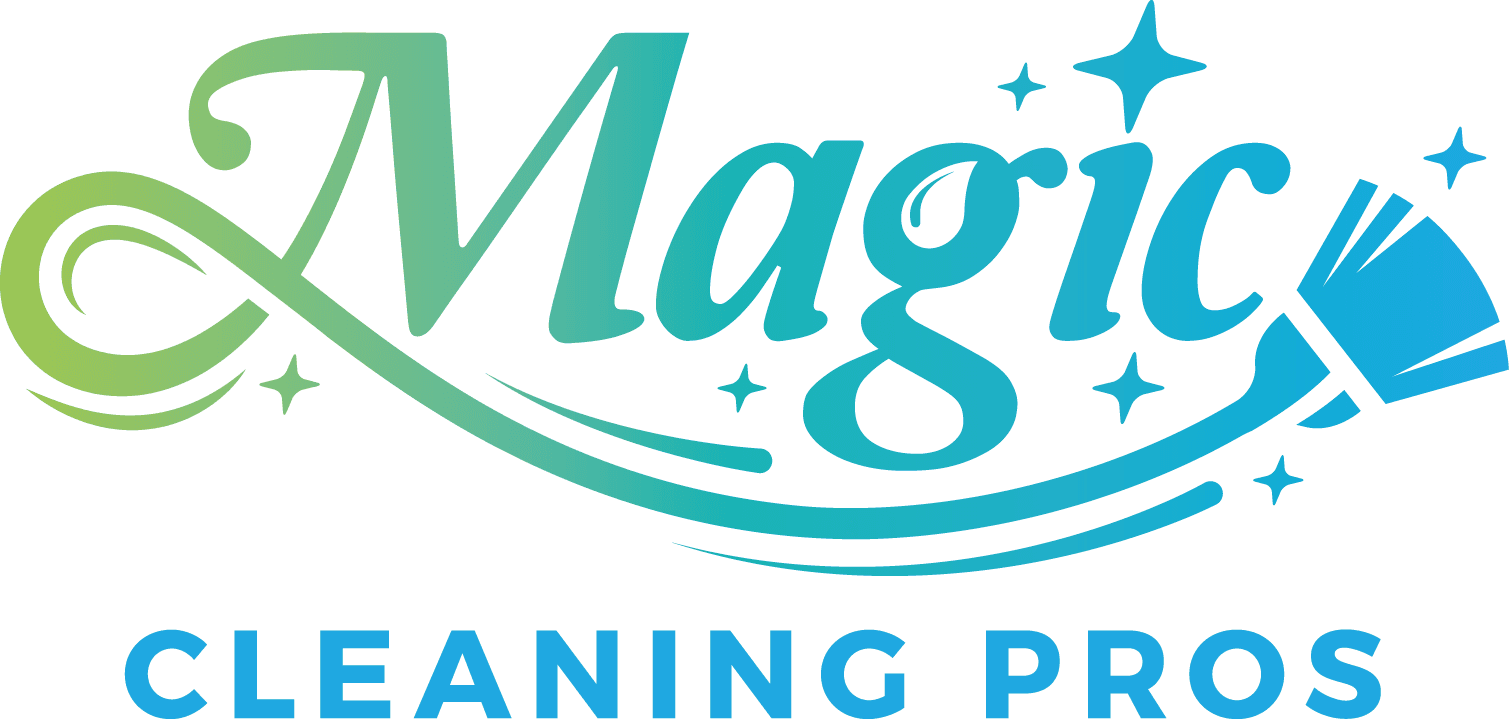Crystal-clear windows can elevate the look of any home or business, but achieving that streak-free shine isn’t always as easy as it seems. Many people make common mistakes during window cleaning that lead to frustrating streaks, residue, or even damage to the glass. From using the wrong tools to cleaning in direct sunlight, small missteps can make a big difference in your results. In this guide, we’ll break down the most frequent window cleaning mistakes and share expert tips to help you avoid them, so your windows stay sparkling clean with minimal effort.
Window Cleaning Mistakes You’re Probably Making
What Are the Most Common Window Cleaning Mistakes That Cause Streaks?
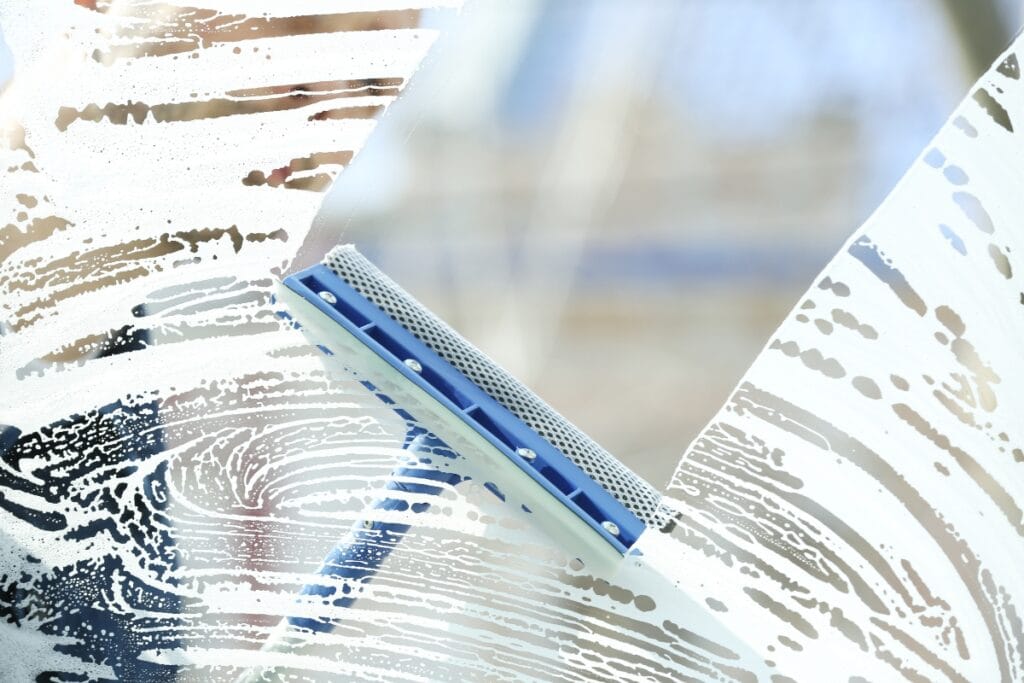
Getting a streak-free finish on windows can be surprisingly difficult. Even with good intentions and the right tools, a few common missteps can leave behind smudges, marks, or haze that only becomes visible after the glass dries. The most frequent causes of streaks include using the wrong type of cleaning solution, working with dirty tools or water, cleaning in direct sunlight, poor technique, and ignoring the specific needs of different types of windows. While each mistake may seem small, they can quickly add up and leave windows looking worse than before.
Using the Wrong Cleaning Solution
The cleaning product you use plays a big role in the final result. Some people assume that any household cleaner will work for windows, but this isn’t the case. Using a solution that’s too concentrated or too weak can leave residue behind.
For example, ammonia-based cleaners can be effective when used properly, but if they’re too diluted or left to dry too quickly, they can leave behind a cloudy film. Some homemade mixtures with vinegar and water can also streak if not wiped off fully or if the ratio of ingredients is off. The wrong product doesn’t just reduce clarity—it can cause long-term buildup that gets harder to clean with each attempt.
Cleaning With Dirty Water or Cloths
Reusing dirty rags or letting your cleaning water get cloudy is one of the quickest ways to spread grime instead of removing it. Each pass of a dirty cloth just moves dust, pollen, or grease from one area to another. Even worse, if grit is embedded in your towel or sponge, it can leave micro-scratches on the glass, which scatter light and make the window appear foggy or streaked. The best results come from using clean, lint-free cloths like microfiber, which trap dirt without leaving fibers behind. Changing your water regularly also helps keep contaminants out of the cleaning process.
Cleaning Windows in Direct Sunlight
Timing matters. It might seem logical to wash windows on a sunny day when you can see clearly, but direct sunlight speeds up the drying process too much. When cleaning solution dries on hot glass before it’s fully wiped off, it leaves behind mineral deposits and streaks that are difficult to remove.
These patches are caused by rapid evaporation that concentrates any leftover cleaner into visible lines. For better results, clean early in the morning or later in the day when the sun isn’t hitting the windows directly. Cloudy but dry days are ideal.
What Are the Effects of Using Improper Cleaning Techniques?
How you clean is just as important as what you clean with. Using circular motions to wipe windows might feel thorough, but it often spreads moisture unevenly and pushes debris around instead of lifting it off. Similarly, using a squeegee at the wrong angle or with inconsistent pressure can create uneven water trails or miss spots entirely.
Vertical or horizontal strokes with overlapping passes are more effective. Drying edges with a clean towel afterward helps prevent drips from forming as well. Rushing the process or skipping final touch-ups can undo all your earlier effort.
How Do Different Window Types Affect Cleaning Mistakes?
Not all windows are the same, and treating them as if they are can lead to problems. Double-hung windows, sliding glass doors, casement windows, and tinted or coated glass each have unique cleaning needs. Tinted windows, for instance, can be damaged by harsh chemicals or abrasive materials.
Insulated windows with seals around the edges may be affected by too much moisture or pressure, which can lead to leaks or clouding between panes. Understanding what type of window you’re working with helps you avoid applying the wrong technique or product. Check for manufacturer recommendations if you’re unsure.
Why Do These Small Mistakes Make Such a Big Difference?
At first, streaks might just seem like an inconvenience or a cosmetic issue. But over time, poor cleaning habits can cause more lasting effects. Residue builds up. Scratches accumulate. Moisture gets trapped where it shouldn’t. When cleaning is done incorrectly again and again, the glass becomes harder to restore. What could have been a simple wipe-down eventually requires a full deep clean—or even replacement in extreme cases.
How Can These Issues Be Avoided?
Avoiding streaks and damage is possible with a few basic guidelines. Use the right cleaning solution at the proper strength. Always use clean water and fresh microfiber cloths.
Choose a time of day when the glass is cool, and don’t rush through the process. Adjust your cleaning technique to the type of window you’re working on, and be mindful of how much pressure and moisture you apply. Most importantly, pay attention as you go. If something seems off, stop and figure out the cause before continuing.
Window cleaning may seem straightforward, but small missteps can affect the final outcome. With a bit of patience and the right approach, it’s possible to get a clear, streak-free result every time.
How Can You Choose the Right Cleaning Solutions to Prevent Streaks?
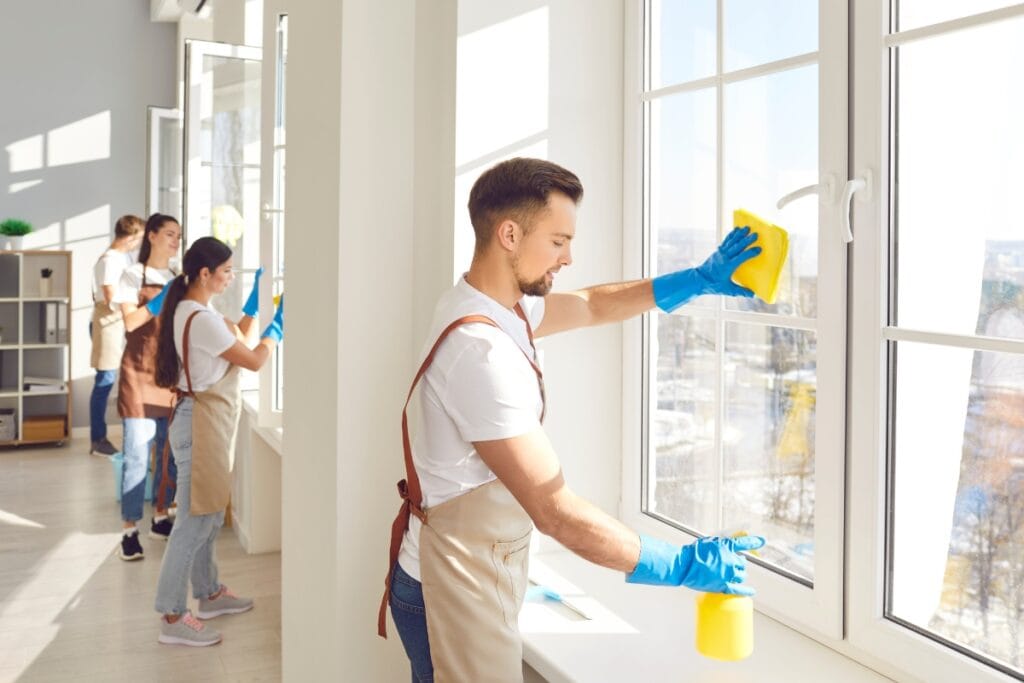
Choosing the right window cleaning solution is essential for achieving a clear, streak-free finish. While it might seem like any spray will do the job, the type of product you use—and how you use it—can have a big impact on results.
The most effective window cleaners are usually simple and gentle. A basic mix of mild dish soap and distilled water is a reliable option for most homes. Distilled water matters because it lacks the minerals that are commonly found in tap water, which often dry on the glass and leave behind visible marks. Vinegar is another popular ingredient. Its acidity helps break down grime and grease without damaging the surface of the glass, making it a solid choice for those looking for an easy, homemade alternative.
For people who prefer store-bought products, there are plenty of professional-grade options available. The best ones are typically labeled as streak-free or ammonia-free and are designed to dry evenly. These formulas are less likely to leave behind a film, which is one of the most common causes of streaking.
Eco-friendly products have also become a reliable option. Many are made with natural ingredients that clean effectively without leaving behind residues. They’re often gentler on both indoor air quality and the surrounding environment. While traditional cleaners may work quickly, some contain volatile ingredients that can dry unevenly, especially in direct sunlight, increasing the chance of visible streaks or dull spots.
Avoiding harsh chemicals is just as important as choosing the right cleaner. Ammonia, bleach, and highly concentrated detergents can leave behind films and sometimes damage nearby surfaces or window seals. These ingredients also tend to dry too fast, especially on warm or sunny days, making it difficult to remove all moisture from the glass before it starts to streak.
Using hard tap water to mix or rinse can be another source of trouble. The minerals it contains often stay behind after the water evaporates, creating spots or streaks even if the cleaning solution itself is well-balanced. Distilled water, which is free from these minerals, is a better option for mixing or rinsing.
Proper dilution is also key. A cleaner that’s too strong can leave residue, while one that’s too weak might not remove dirt effectively. A common guideline is one part cleaning solution to ten parts distilled water, but results can vary based on the product. If windows look hazy or feel tacky after drying, it’s usually a sign that the mix needs more water.
Which Tools Are Essential for Streak-Free Window Cleaning?
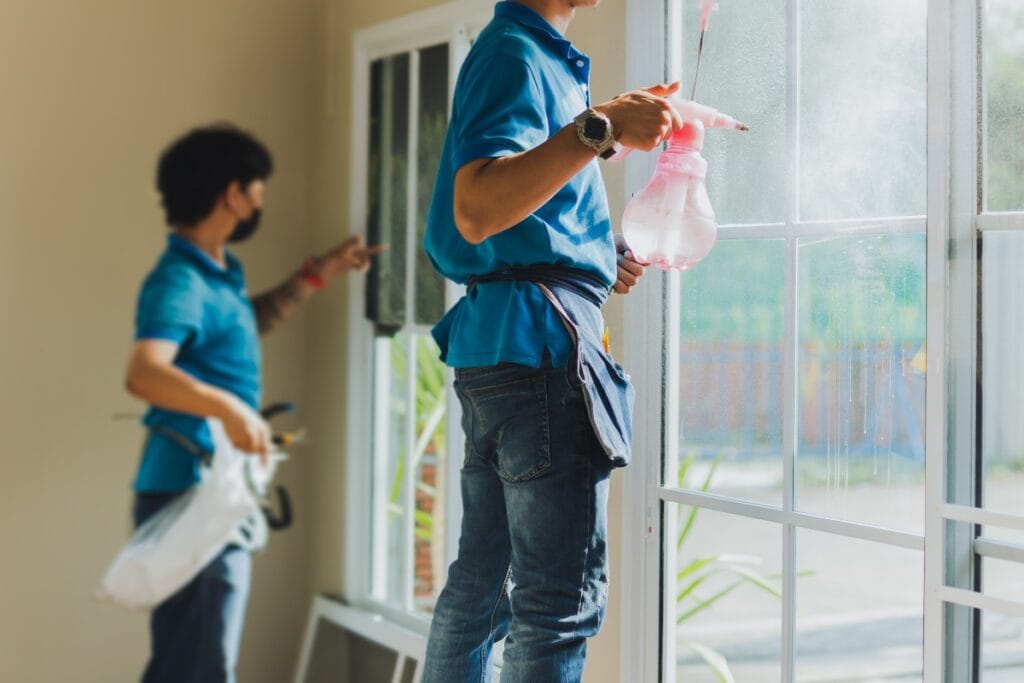
Achieving streak-free windows isn’t just about the solution you use. The tools you choose can make or break the results. Investing in the right equipment ensures a more efficient process and cleaner finish.
Choose a Quality Squeegee
A reliable squeegee is one of the most important tools for window cleaning. Look for a model with a flexible rubber or silicone blade that maintains a smooth, even edge. A worn-out blade won’t remove water effectively and can leave streaks behind. Designs with ergonomic handles and beveled edges help distribute pressure evenly across the glass, reducing the chance of streaking and fatigue during use.
Use Microfiber Cloths for Detail Work
Microfiber cloths are preferred over paper towels or standard rags because of their ability to trap dust, dirt, and moisture without pushing particles around. The fibers grip grime instead of smearing it, making them ideal for wiping corners, frames, and smaller panes. They’re also lint-free, which helps maintain a clear finish. For best results, make sure cloths are washed regularly to prevent buildup of debris that can scratch glass or reduce absorbency.
Start With Clean Water and Tools
The water you use plays a major role in the final outcome. Distilled or filtered water helps avoid streaks caused by minerals in tap water. This is especially important if your local water supply is high in calcium or magnesium, which can leave visible marks once the water evaporates. Use a clean bucket and rinse your tools often during the process. If the water becomes cloudy, replace it before continuing.
Keep Your Equipment in Good Condition
Maintaining your tools extends their lifespan and ensures consistently good results. Squeegee blades should be rinsed after every use and inspected regularly for nicks or stiffness. Damaged blades can drag water unevenly and leave behind lines. Microfiber cloths should be laundered with minimal detergent and without fabric softener, which can coat the fibers and reduce their effectiveness. Air-drying is recommended to prevent shrinkage or wear.
Build a System That Works for You
While the tools themselves are important, having a system helps too. Start at the top of the window and work down in overlapping passes to avoid drips and missed spots. Use the squeegee to remove the majority of moisture, then follow up with a microfiber cloth to catch any remaining water along the edges. Always clean both the inside and outside of the glass, as streaks can be caused from either side.
What Are the Proper Techniques to Clean Windows Without Streaks?
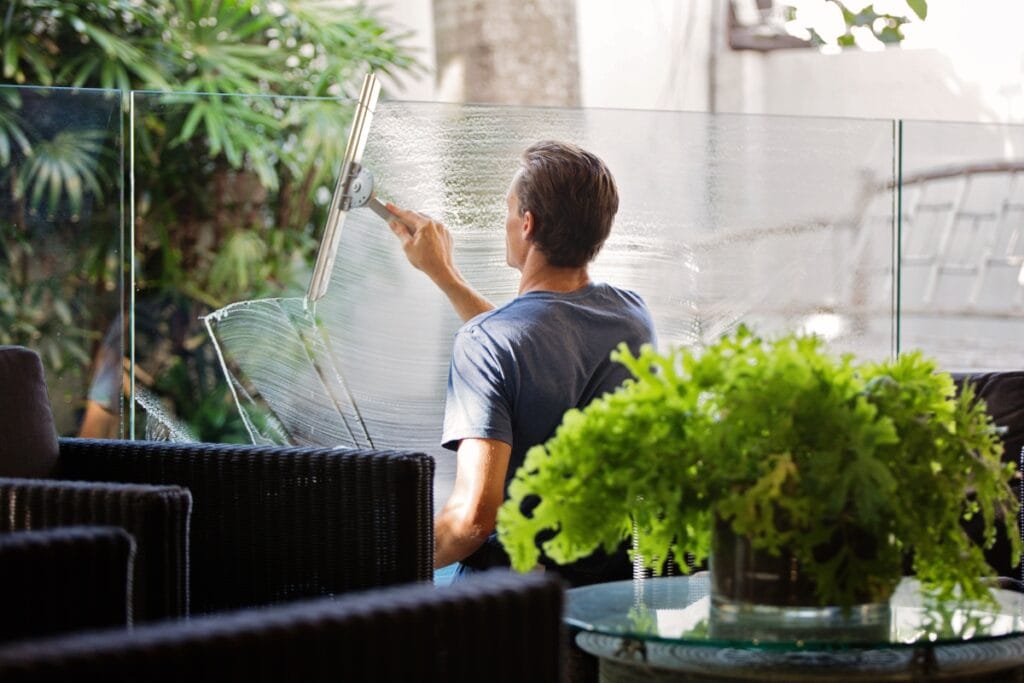
Getting clean, streak-free windows isn’t just about what products you use. Technique matters just as much. The way you move the squeegee, the timing of your cleaning, and the order of your steps all play a part in getting clear, professional-looking results.
Use a Squeegee the Right Way
A squeegee is one of the most effective tools for window cleaning, but only when used properly. Start at the top of the window and pull downward in a controlled motion, overlapping each stroke slightly to avoid leaving behind moisture. Keep the blade at a slight angle, around 45 degrees, and wipe it off between passes to prevent water lines. Working in a smooth, steady rhythm helps maintain even pressure and ensures the glass dries uniformly.
Clean in Indirect Sunlight
Direct sunlight can cause the cleaning solution to evaporate too quickly. When the liquid dries before it’s removed, it often leaves behind streaks or cloudy patches. Cleaning windows in the early morning or later in the afternoon helps you avoid this issue. Shade gives the solution more time to lift dirt from the glass before you wipe it away.
Follow a Logical Cleaning Sequence
The order in which you clean matters. Always begin by dusting the window frame and sill to remove loose dirt and cobwebs. Skipping this step can cause debris to smear across the glass later. Once the frame is clean, apply your cleaning solution evenly, working from top to bottom. This top-down approach allows gravity to help move the dirt downward rather than spreading it around. After squeegeeing, go back with a clean microfiber cloth to catch any remaining drips or residue at the edges and corners.
Change Cloths Frequently
Even high-quality microfiber cloths stop being effective once they become saturated or dirty. During large cleaning jobs or in dusty environments, it’s smart to switch to a fresh cloth every 10 to 15 minutes. Continuing to use the same dirty cloth can undo your work by spreading grime back onto the glass. Having a few clean cloths on hand makes the job go faster and keeps results consistent.
Stay Consistent Across Windows
If you’re cleaning multiple windows, repeat the same process on each one. Consistency helps maintain the quality of your results and reduces the chance of skipping steps. It also helps you move more efficiently as you settle into a reliable routine. Small changes in technique from one window to another can result in an uneven appearance, especially when the sun hits them at different angles.
By sticking to proper techniques and adjusting for your environment, you can avoid streaks and get clear, polished windows every time. A little extra care in how you approach the task goes a long way toward a cleaner finish.
How Can You Remove and Prevent Hard Water Stains on Windows?
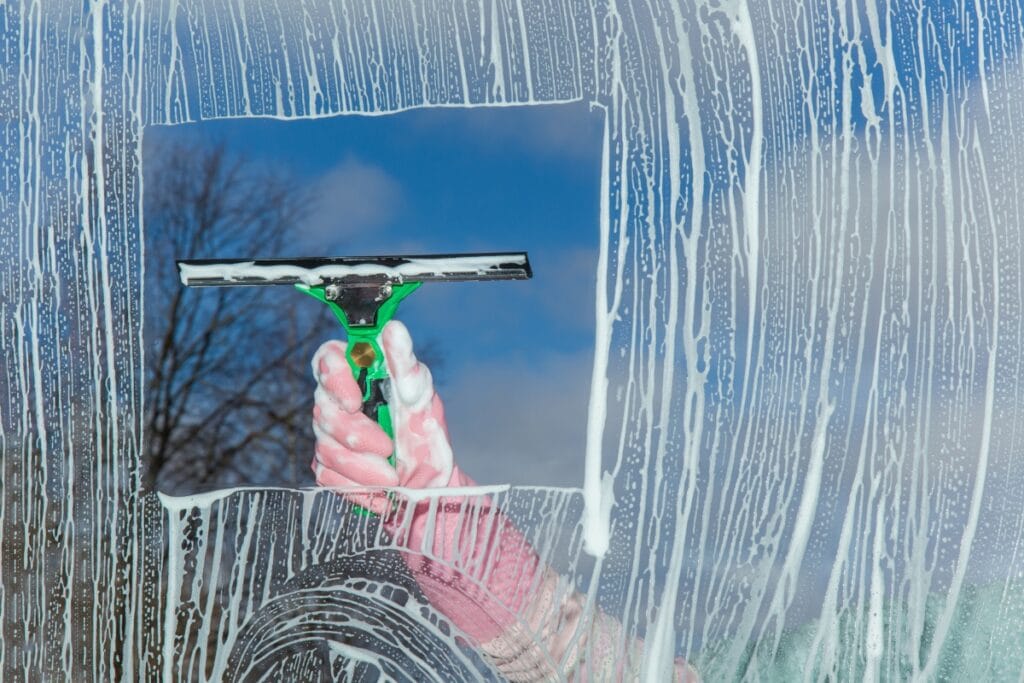
Hard water stains are a common issue for windows, especially in areas with high mineral content in the water supply. These marks, often left behind by calcium and magnesium, can dull the glass over time and reduce overall visibility. If ignored, they become harder to remove and can leave a lasting haze on the surface.
Understanding What Causes Hard Water Stains
Hard water stains form when water containing dissolved minerals evaporates from the surface of a window. As the water dries, it leaves behind a thin layer of minerals. Over time, these deposits build up and create noticeable spots or cloudy patches. This usually happens after watering outdoor plants, washing windows with untreated tap water, or during rainfall in areas with mineral-rich groundwater. When windows aren’t rinsed or dried thoroughly, the problem becomes more noticeable.
Effective Methods to Remove Mineral Deposits
The most reliable and affordable way to remove hard water stains is with a vinegar-based solution. Vinegar’s acidity helps break down mineral deposits without damaging the glass. A simple mix of equal parts white vinegar and distilled water can be applied directly to the glass using a spray bottle or sponge. Let the solution sit for a few minutes before scrubbing gently with a soft cloth or non-abrasive pad. Afterward, squeegee the surface clean to remove both the solution and the loosened minerals.
For tougher spots that don’t respond to vinegar, a diluted citric acid solution can be more effective. This can be applied in the same way, but care should be taken not to use anything too abrasive, as it can scratch the glass. Store-bought mineral deposit removers are also available, but always check that they’re safe for windows before use.
Preventing Stains in Future Cleaning Routines
The best way to avoid hard water stains is to prevent mineral-rich water from drying on the glass in the first place. Using distilled water for the final rinse during window cleaning can significantly reduce the risk of staining, since it lacks the minerals that cause residue. Avoid cleaning windows in direct sunlight or during the hottest part of the day, when evaporation happens quickly. Slower evaporation allows more time to wipe away water before it leaves behind deposits.
Regular window maintenance is also key. The more frequently windows are cleaned, the less time minerals have to harden and become difficult to remove. In locations where water hardness is particularly high, installing a water softener can offer broader benefits for household cleaning, including windows.
When Should You Consider Professional Window Cleaning Services?

Cleaning your windows yourself can be effective in many cases, especially for smaller homes or low-level windows. But there are times when hiring a professional service makes more sense. Certain situations require tools, techniques, or safety measures that go beyond standard household cleaning.
Why Professional Window Cleaning Makes a Difference
Professionals are trained to handle a wide range of window types and situations, from standard residential glass to high-rise or specialty windows. They use commercial-grade squeegees, pure water systems, and eco-conscious cleaners that deliver better results than most over-the-counter products. Their experience allows them to clean quickly and thoroughly without leaving streaks or damaging the glass.
Another advantage is consistency. Professionals follow a structured process that avoids common mistakes like using dirty cloths or cleaning in poor weather conditions. They understand how to work with different types of glass, including tinted or treated windows, and how to adjust techniques based on environmental factors like sun exposure, humidity, or hard water. Their ability to identify potential issues—like broken seals, cracks, or water damage—can help prevent more serious problems down the line.
How to Evaluate a Window Cleaning Service
If you’re thinking about hiring a cleaning service, take time to understand how they work. Ask how they clean different window types and what products they use. A reputable company should be able to explain their cleaning process clearly, including what steps they take to avoid damage or streaks.
Look into their safety practices, especially if your home or building has multiple stories. Proper training, equipment, and insurance coverage are critical for jobs that involve ladders or rooftop access. You should also find out how often they recommend scheduling cleanings, based on your specific environment.
While customer reviews are helpful, direct communication with the company often gives you the clearest picture of their professionalism. Ask whether they offer guarantees or warranties for their work and how they handle post-service follow-ups.
Setting a Cleaning Schedule That Works
The ideal window cleaning schedule depends on where you live, how much exposure your windows have to dust, pollen, or pollution, and how visible they are to guests or clients. For many homeowners, having windows cleaned twice a year—usually in the spring and fall—helps maintain clarity and curb appeal.
In urban areas or near construction zones, you may need more frequent cleanings. Commercial buildings often require quarterly or even monthly service, depending on size and visibility.
By investing in professional window cleaning when it’s needed, you can maintain the appearance and condition of your windows without the hassle or risk of doing it all yourself. The result is a cleaner, brighter view and fewer long-term issues with buildup or damage.
Frequently Asked Questions
Q: How often should windows be cleaned to avoid streaking? A: For residential properties, cleaning at least twice a year is advisable. In urban or high-pollution areas and commercial buildings, quarterly services may be more effective to prevent residue buildup.
Q: Can I use regular tap water for window cleaning? A: Tap water contains minerals that can cause hard water stains. Using distilled or filtered water, especially for the final rinse, minimizes these risks.
Q: What is the best technique for using a squeegee without leaving streaks? A: Start at the top of the window and pull the squeegee downward in an overlapping pattern at a 45-degree angle. Wipe the blade with a clean cloth between strokes.
Q: How do environmental conditions affect window cleaning outcomes? A: Direct sunlight, high wind, and temperature extremes can speed evaporation and cause streaks. Cleaning on overcast, mild days is preferable.
Q: Are eco-friendly cleaning solutions as effective as traditional products? A: Yes, many eco-friendly options use natural ingredients that clean effectively without leaving residue, often matching or exceeding traditional products’ performance.
Q: What should I ask a professional window cleaning service before hiring them? A: Inquire about their cleaning methods, types of solutions and equipment used, staff training, safety protocols, and service frequency to ensure they can deliver a streak-free, high-quality finish.
Final Thoughts
With streak-free windows, your home or business will sparkle inside and out—and avoiding common cleaning pitfalls is the first step. When you’re ready to enjoy crystal-clear views without the hassle, trust the cleaning experts at Magic Cleaning Pros to deliver professional results every time. Give us a call at 678-515-5820 or fill out the form on our website for a free quote—and let’s make those windows shine!

